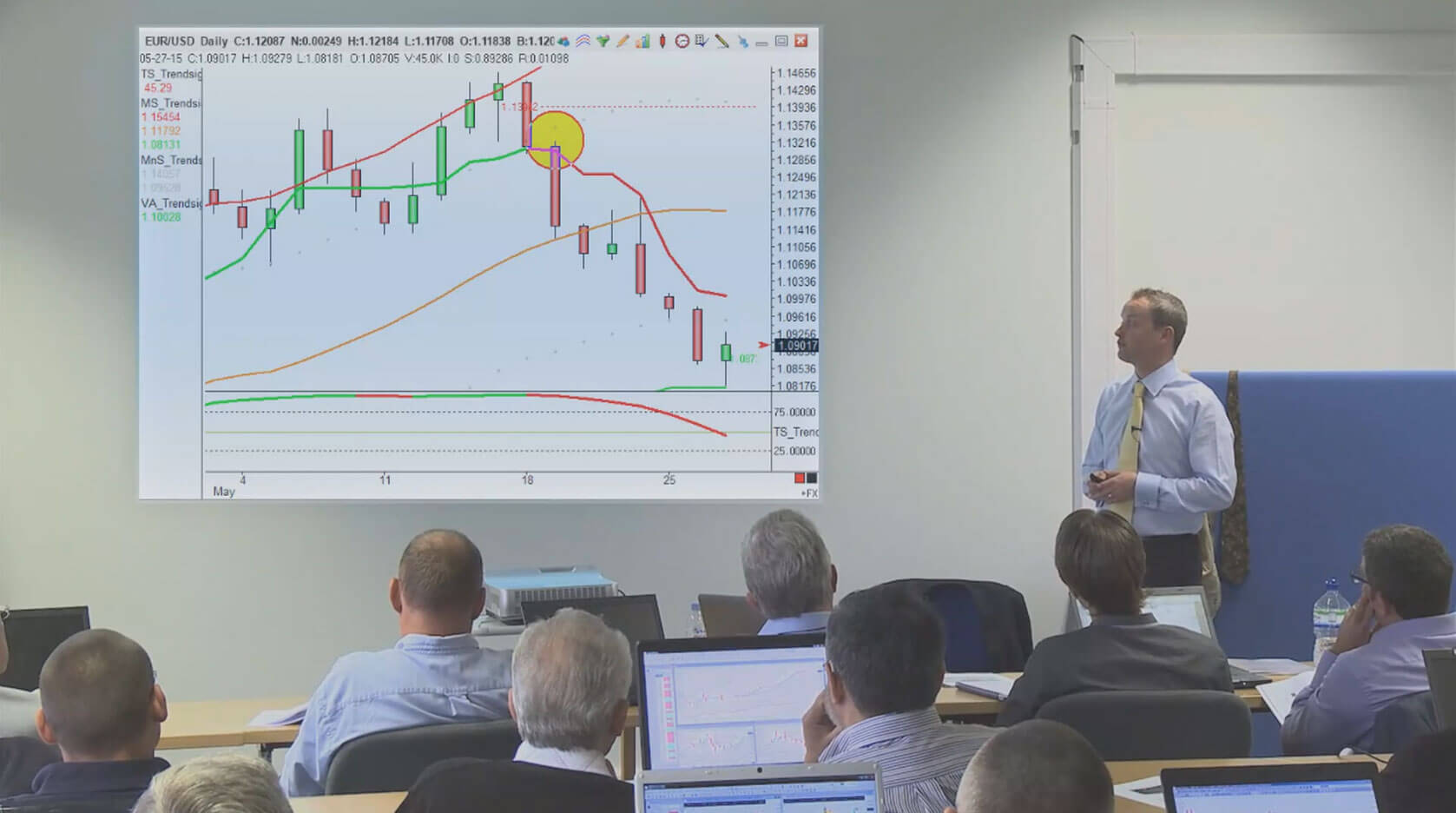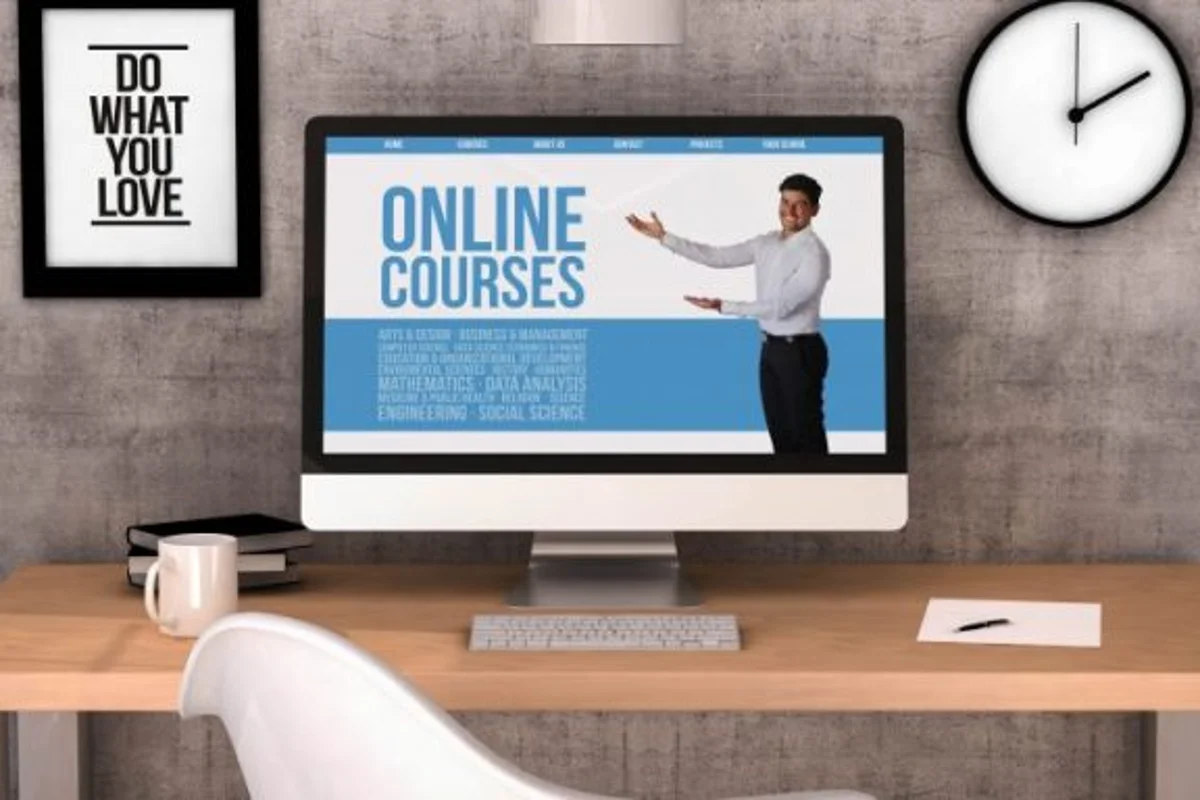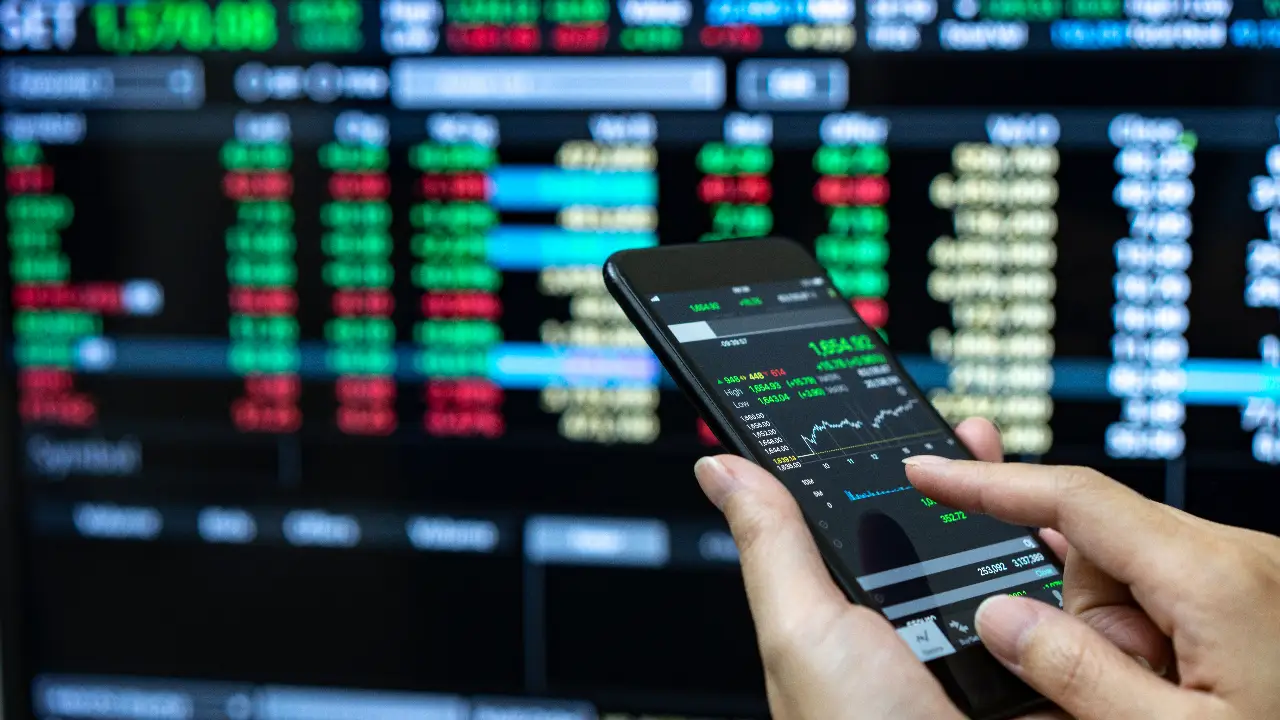You open a practice account, pull up a chart, and watch currency pairs move, and you wonder: Is Forex Trading Hard when pips, leverage, and indicators feel overwhelming? Many beginners hit the same wall, unsure whether to learn technical analysis, study risk management, or pick a course that matches their pace. So, Is Forex Trading Hard?
This guide shows clear, practical steps to compare beginner-friendly forex courses, covering demo trading, trading psychology, entry and exit rules, backtesting, platform use, and budget so you can choose one that fits your skill level and learning style. Want to stop guessing and start learning with a plan you can trust?
That search gets easier with tools like Goat Funded Trader, a prop firm that blends training, mentorship, and funded practice accounts so you can apply position sizing, risk control, and real-size trades on live platforms while protecting your capital.
8 Best Forex Trading Courses For Beginners

1. How To Trade: Hands-On Course That Teaches Execution
How To Trade combines live instruction with self-paced modules and simulated trading for practical skill building. The course costs about $500 and moves students from forex basics to active trade execution. It covers market structure, currency pairs, order types, risk management, and trade management using demo accounts and simulated trading. Instructors use live market examples so learners see trade setups, entries, exits, and position sizing in action rather than only reading theory.
Pros include guided practice with a simulated environment and timely instructor feedback. The program lacks community forums, so peer discussion is limited. Who should take it: beginners who want expert-led coaching and hands-on practice before risking real capital. Do you prefer learning by watching live trades and then practicing them yourself?
2. Asia Forex Mentor: Intensive Price Action Mastery Course
Asia Forex Mentor is a premium, self-paced program priced around $2,497 that emphasizes price action, market analysis, and the development of a repeatable trading system. The curriculum digs into chart reading, setups, trade management, and building a trading plan. It does not include live classes, simulated trading, or interactive community features, so students work independently through modules and video lessons.
This course suits disciplined learners who want deep strategy training and focused forex education without scheduled sessions. It stresses trading psychology, risk control, and refining entry and exit rules. Are you prepared to study intensively on your own and backtest strategies on a demo account?
3. Interactive Brokers Introduction to Forex: Broker-Backed, Community-Driven
Interactive Brokers offers a free, self-paced introductory forex course with access to community forums and live trading ideas from a broker platform. The course explains how forex markets operate, the mechanics of currency pairs, basic forex strategies, and how liquidity and spreads affect trade outcomes.
It lacks instructor-led live sessions and simulated trading built into the course, but students can open demo accounts on many platforms for hands-on practice. This option suits beginners who want structured, on-demand lessons, peer discussions, and market idea feeds from a reputable broker. If you're going to combine broker tools with community insight and demo testing, does this course meet your learning style?
4. Home Trader Club: Live Coaching and Community Support
Home Trader Club charges about $370 and blends live instruction with self paced learning, community forums, and shared market ideas. Live sessions give immediate feedback on trade plans and setups while the self-paced content covers core topics such as technical analysis, risk management, trade journaling, and trading psychology.
The course does not include a built-in simulated trading playground, so students should use demo accounts to practice. Students who thrive on group learning, peer accountability, and regular live critique find this format helpful. The community and idea sharing support ongoing development and habit building. Would you prefer live coaching and a forum to discuss setups and refine your trading plan?
5. BabyPips School of Pipsology: Free, Beginner-Friendly Forex Education
BabyPips provides a comprehensive free curriculum covering forex basics, chart reading, technical indicators, price action, risk management, and trading psychology in plain language. The self-paced lessons guide beginners from basic topics to more advanced concepts without live instruction or built-in simulated trading. However, many learners use demo accounts and community forums to practice and exchange trading ideas.
This resource works well as a first forex trading course for beginners who need clear explanations and a steady progression. If you want low-cost education that covers position sizing, demo trading, and building a journal, start here.
6. Udemy Forex Algorithmic Trading Course: Build Your First Forex Robot
The Udemy course priced around $94.99, focuses on algorithmic trading and building forex robots using code. It teaches how to program automated strategies, backtest them, and deploy on platforms like MT4 or MT5. The format is entirely self-paced and leans toward learners who already have some programming basics and want to combine software development with currency trading.
This course does not offer live instruction, community forums, or simulated trading within the class, so students should use demo accounts and backtesting tools to validate algorithms. Are you comfortable with coding and eager to automate entries, exits, and risk management?
7. IG Academy: Free Live Classes and Market Idea Feeds
IG delivers a free education suite that includes live classes, self-paced modules, community forums, and access to live trading ideas. The course content covers core forex topics such as market mechanics, technical analysis, risk control, and chart-based strategies. It does not include simulated trading embedded in the lessons, but IG provides demo accounts that learners can use for hands-on practice.
This option suits beginners who want a mix of live expert sessions, self-paced study, and a supportive community to test ideas and discuss trade psychology. Do you value instructor interaction, on-demand lessons, and market idea streams?
8. AvaAcademy: Free Structured Forex Lessons with Risk Management Focus
AvaTrade’s AvaAcademy offers free structured lessons that guide new traders from the basics of forex to practical skills like risk management, technical analysis, and trading psychology. The material explains how to build a trading plan, use demo accounts for practice, and implement position sizing and stop loss rules. The course emphasizes practical application and provides accessible modules for consistent skill development.
This resource pairs well with demo trading and journal keeping to reinforce learning and test strategies in a controlled environment. Would you use AvaAcademy as a foundation and then practice ideas on a demo account?
Related Reading
- What Is A Lot Size In Forex
- How Much Do You Need To Start Trading Forex
- How Profitable Is Forex Trading
- What Is Swap In Forex Trading
- Forex Trading Account Types
- How To Learn Forex Trading
- Automated Forex Trading
- Fibonacci Forex Trading
- Pros And Cons Of Forex Trading
- Forex Trading Profit Per Day
Types of Forex Trading Courses

1. Online Forex Courses That Teach the Basics and Beyond
Online courses provide a structured path for forex trading, whether for beginners or traders looking to move to advanced strategies. They use video lessons, eBooks, interactive modules, and quizzes to teach currency pairs, how pips work, spread and leverage, and order types like market orders and limit orders. Who benefits most from this format? People who need flexibility and a clear learning plan.
What core topics do these beginner forex courses cover? Expect to learn about chart reading, candlestick patterns, technical analysis, indicators, price action methods, entry and exit strategies, stop loss and take profit placement, position sizing, money management, and basic fundamental analysis. Many courses also include modules on trading psychology, risk management, and building a trading plan. Which skill do you want to make first?
Tools and practice features appear in most online packages. Look for demo accounts, trading simulators, back testing tools, replay mode, and downloadable templates for trade journals. Live webinars and interactive Q&A sessions show real-time chart setups and trade execution. These features let you practice without risking capital and test trading strategies before opening a live account.
Cost and course structure vary widely. Some beginner forex course offerings start near fifty dollars and scale up depending on the depth of content and extras like lifetime access or certificate programs. Complete programs with mentoring, community access, and regular live coaching cost more. Check whether the course offers refund windows, a clear syllabus, and ongoing updates for current market conditions.
2. One-on-One Forex Training With a Mentor Who Trades
One-on-one training places you with an experienced trader who teaches strategy application in real market conditions. This format focuses less on broad theory and more on trade selection, trade management, and adapting tactics to your personality. Which trader do you want guiding your first live trades?
What you do in a mentorship session varies. Mentors typically review your charts, refine entry and exit methods, show live trade setup examples, assess risk per trade, and enforce money management rules like position sizing and use of stop loss. They often provide critiques of your trade journal and help you back-test ideas. Expect practical assignments and direct feedback on trading psychology under live stress.
Price and commitment for individual coaching run higher. Packages can start around one thousand dollars and reach ten thousand dollars or more, depending on the mentor's reputation, session frequency, and access to live trading rooms. Ask about track record verification, sample lessons, and whether the mentor trades publicly or provides verified performance statements.
How to vet a mentor before you pay. Ask for a clear teaching plan, examples of past student outcomes, a trial session, and details on what support you get between sessions. Confirm they teach trade management, risk control, use of leverage and margin, and how to transition from demo trading to a live account. Look for transparency about fees and no promises of guaranteed profits.
3. Other Course Formats (Workshops, Broker Education, and Short Tracks)
Workshops and in-person training range from single-day intensives to weekend boot camps, focusing on specific skills such as price action or advanced technical analysis. These sessions give concentrated practice on chart reading and fast feedback on setups. What skill do you want to sharpen in a single weekend?
Many brokers and trading platforms provide free educational resources targeted at beginners. These include webinars, glossaries for pips and spreads, demo accounts, and short courses on order types and leverage. They help you learn platform mechanics and basic strategy ideas with minimal cost.
Short format courses and micro classes target single topics like candlestick patterns, risk management, or building a trading plan. They work well if you want to plug a gap in your skill set without committing to a complete program. Do you prefer a deep program or short, focused lessons?
Choosing the Right Course for a Beginner Trader
Match the course format to your learning style, budget, and time. If you need routine and structure, choose a self-paced online course with a clear syllabus, demo trading practice, and assessments. If you want fast, tailored growth, select one-on-one coaching that forces discipline and teaches how to handle live orders and emotional pressure.
Ask these practical questions before you enroll. Does the course include demo account practice and trading simulator access? Are live trading sessions or trade reviews included? Does the teacher cover both technical analysis and money management? Can you get a refund or a trial lesson? How will the program help you move from demo trading to a live account while controlling drawdowns?
Keep a focused learning plan. Start with demo trading, practice position sizing, record trades, and refine entry and exit rules. Evaluate progress by consistency of execution and risk control, not by quick profit claims. Which small skill will you master first before risking real capital?
Related Reading
- Forex Trading Candlestick Patterns
- Forex Trading Algorithms
- Risk Management In Forex Trading
- Forex Trading Day
- Minor Forex Pairs
- Forex Trading Vs Crypto Trading
- Advanced Forex Trading
- Copy Forex Trading
Qualities of Good Forex Trading Classes

Reputation
A strong reputation separates a solid forex trading course for beginners from sales pitches and get-rich-quick schemes. Look for consistent positive feedback from real students, not inflated marketing testimonials. Ask current or former students specific questions about the curriculum, instructor responsiveness, and whether the course improved their demo account performance or live trading plan. Check independent forums, trading communities, and LinkedIn profiles to verify instructor credentials and documented results. Does the provider publish a syllabus, sample lessons, or verifiable performance records that you can review before you pay?
Certification and Regulation
Courses that align with recognized financial standards reduce the risk of misleading content and poor compliance training. In the U.S., regulators like the SEC and the CFTC set rules that affect brokers and market conduct. A reputable forex course will acknowledge these rules and teach risk disclosure, money management, and ethical trading practices. Internationally, look for ties to established institutions or certifications that match your jurisdiction, such as oversight from FCA or ASIC, where relevant. Ask whether the course offers a recognized certificate, continuing education credits, or documented adherence to regulatory standards, and whether the training covers both technical analysis and the legal side of trading.
Balanced Cost and Time Commitment
Define what you can afford in money and hours before choosing between a free beginner forex course, an affordable online forex class, or a high-touch mentorship program. Short intensive coaching can accelerate learning in trading psychology, position sizing, and live risk management. At the same time, structured online courses let you progress through currency trading basics, indicators, price action, and backtesting at your own pace.
Try demos and trial lessons, use a demo account to practice strategies, and prefer programs that require a trading plan, offer practical exercises, and teach how to manage leverage and pip risk. What investment level gives you the best mix of skilled instruction, hands-on practice, and ongoing support?
Goat Funded Trader gives you access to simulated accounts up to $800K with the most trader-friendly conditions in the industry, no minimum targets, no time limits, triple paydays, and up to 100 percent profit split, and you can choose funding through customizable challenges or instant funding options with our prop firm model. Join over 98,000 traders who have collected more than $9.1 million in rewards, backed by our 2-day payment guarantee with a $500 penalty for delays, and sign up to Get Access to up to $800 today with 25 to 30 percent off.
How to Stay Away from Scam Courses
Avoiding Scam Course Promises
Scam trading courses sell certainty. They promise guaranteed profits, massive returns, or a clear path to quit your job fast. A legitimate forex trading course for beginners will explain risks, show realistic results, and teach risk management, technical analysis, fundamental analysis, trading psychology, and money management. Does the sales page lean on flashy numbers and success stories without explaining how those results were achieved?
Recognizing Red Flags
Watch for aggressive marketing, unsolicited calls or messages, pressure to deposit funds now, and claims of risk-free returns. Fake testimonials, stock images, and anonymous instructors are common signs of a fraudulent trading course. Check for vague terms in the contract, hidden fees, and promises of secret signals or guaranteed win rates. Have you seen any of these warning signs in the course pitch?
Verify Credentials and Authenticity
Verify instructor credentials and company registration. Look for contactable instructors on LinkedIn, business registration records, and clear certification from recognized regulators when relevant. Confirm whether the course focuses on practical skills like demo trading, backtesting, building a trading plan, and how to use leverage responsibly. Does the provider show sample lessons, a clear syllabus, and a refund policy?
Do Your Homework and Start Small
Ask for a free trial lesson or a short preview. Use a broker demo account to apply the course methods to paper trading before risking real capital. Backtest any strategies shown and check independent course reviews on forums, Trustpilot, ForexPeaceArmy, and Reddit. Start with small stakes and scale only after consistent results and confidence in your trading plan. Have you tried the demo or tested the approach yourself?
Report Suspicious Activity
Keep receipts, screenshots, emails, and payment records. If you suspect fraud, file complaints with your local consumer protection agency and with relevant regulators such as the CFTC in the United States, FCA in the United Kingdom, ASIC in Australia, or CySEC in the European Union. Report the provider on review sites and contact your bank or payment provider to dispute charges when warranted. Will you collect the evidence needed to make a formal complaint?
How to Choose the Best Forex Trading Courses
Course Structure and Delivery
Prefer short video lessons plus written summaries and quizzes rather than giant lectures. Look for hands-on elements, chart walkthroughs on MT4 or MT5, simulated trades, downloadable templates for a trading plan, and examples of live trades. Does the class include exercise files, access to a trading simulator, or step‑by‑step screenshots for strategy setup? Interactive formats that require you to place demo trades speed learning more than passive watching.
Assess the Availability and Quality of Resources
Quality courses include video tutorials, cheat sheets, strategy templates, indicators, economic calendars, and trade journaling tools. Verify that indicators and templates work with common platforms like MetaTrader 4, MetaTrader 5, or TradingView. Check whether they teach you how to use an economic calendar for forex news and how to read reports that move currency pairs.
Pricing, Packages, and Value for Money
Compare what each tier gives you: recorded lessons, live coaching, group calls, one-on-one mentoring, and access to private communities. Free or low-cost beginner forex courses can cover essentials, but paid courses often include mentorship, live market sessions, and feedback on your trades. Match the price to tangible outcomes such as hours of instruction, number of live sessions, tools included, and access to instructors for trade review.
Customer Support, Community, and Mentorship Options
Do you get timely support via email, chat, or forum? Are there active student groups where traders post ideas, trades, and backtest results? A course that pairs lessons with community feedback and periodic live Q&A sessions teaches real‑world decision making. Ask whether mentors review your demo trades and help refine your trading plan.
Credentials, Reviews, and Instructor Track Record
Check instructor experience and verifiable trading history where possible. Look for independent reviews, sample student trade logs, and testimonials that include measurable improvements such as better risk control or consistent demo profits. Beware of exaggerated performance claims or anonymous endorsements.
Practical Red Flags to Watch For
Guarantees of fast riches, required purchases of expensive signals, or closed groups that pressure you into higher tiers are warning signs. If a course focuses only on indicators without risk management or ignores demo trading and backtesting, skip it.
Quick Buying Checklist for a Forex Trading Course for Beginners
Clear syllabus covering forex basics, technical and fundamental analysis, risk management, and trading psychology
- Hands-on practice demo account work, backtesting, and trade journaling
- Platform training for MT4, MT5, or TradingView
- Tools provided indicators, templates, and an economic calendar for usage
- Live trade examples or recorded trading room sessions
- Access to instructor or mentor feedback and an active student community
- Transparent instructor credentials and independent reviews
- No pressure sales, no magic profit guarantees
How to Test a Course Before Paying
Most reputable providers offer sample lessons, money-back guarantees, or short trial access. Watch a sample video and try any provided templates on a demo account. Ask a question in the course forum before you buy; prompt, knowledgeable replies show active support.
Questions to Ask Before You Enroll
Do you prefer self-study or guided coaching? How much time can you spend practicing on a demo account? What is your budget for tuition and for the trading capital you will use while you learn? Which platforms do you want to trade on, such as MT4, MT5, or TradingView? These answers steer you to the right package and format without wasting money.
Get 25-30% off Today - Sign up to Get Access to up to $800 today
Is Forex Trading Hard? A Direct Look at the Learning Curve
Many beginners ask if forex trading is hard. The short answer is that the basics are straightforward while mastery takes time. Learning currency trading requires the study of price action, candlestick patterns, support and resistance, and order types. You will practice placing market orders, stop loss orders, and take profit orders on platforms like MT4 or MT5. At first, you learn pips, leverage, margin, and how spreads affect your cost. Those fundamentals are simple to explain and quick to practice in a demo account.
What a Forex Trading Course for Beginners Actually Teaches
A solid forex trading course for beginners covers core topics in clear lessons. Expect modules on forex basics, currency pairs, market hours, and pip calculation. Then you move to technical analysis, such as moving averages, RSI, MACD, trend lines, charting, and candlestick reading.
You learn fundamental analysis that explains how economic data, interest rates, and central bank moves shift currency value. Courses include trade management lessons on money management, position sizing, and creating a trading plan. Hands-on sections cover demo trading, backtesting, and keeping a trade journal.
How the Goat Funded Trader Fits into Your Learning and Growth
Goat Funded Trader gives access to simulated accounts up to $800K under trader-friendly conditions to help you transition from demo to funded trading. The program offers no minimum targets and no time limits, allowing you to practice strategy development without forced deadlines. Triple paydays with up to 100 percent profit split reward good performance, and the two-day payment guarantee with a five-hundred-dollar penalty for delays adds trust. Choose customizable challenges or start immediately with instant funding options to match your readiness and trading style.
Why Funded Accounts Accelerate Development
Funded accounts change incentives. You trade a larger size and learn real order execution, slippage, and psychology under live conditions while keeping risk controlled through preset rules. That experience reveals how indicators and strategies behave on larger timeframes and with real money involved. Funded programs that allow simulated testing and gradual scaling help bridge the gap between a forex trading course for beginners and professional trading.
Practical Steps to Start Today with a Beginner-Friendly Path
Open a demo account and follow a structured course that covers forex basics, technical analysis, and risk management. Backtest simple price action strategies and log every trade. Practice money management rules and refine entries and exits with indicators like moving averages, RSI, and MACD. When you consistently meet your performance metrics, consider a funded program that supports scaling and provides real payouts. Sign up to Get Access to up to $800 today, and 25 30 percent off if you want instant access to larger simulated capital and trader-friendly conditions.
Questions to Ask Yourself Before You Trade Live
Do you have a trading plan that specifies entry criteria, stop loss, and position size? Can you show consistent results on a demo account with documented backtesting? Are you comfortable managing leverage and margin in live conditions? Honest answers guide the pace of transition from beginner lessons to funded accounts and help you avoid common traps that stall new traders.
Related Reading
- Forex Options Trading Strategy
- Best Laptop For Trading Forex
- Forex Trading App For Beginners
- How To Choose The Best Forex Broker
- Best Forex Pairs To Trade During New York Session
- Forex Trading Strategies For Beginners
- Forex Algorithmic Trading Strategies
- Best Forex Pairs For Beginners
.svg)
.avif)



.avif)





.svg)

.svg)